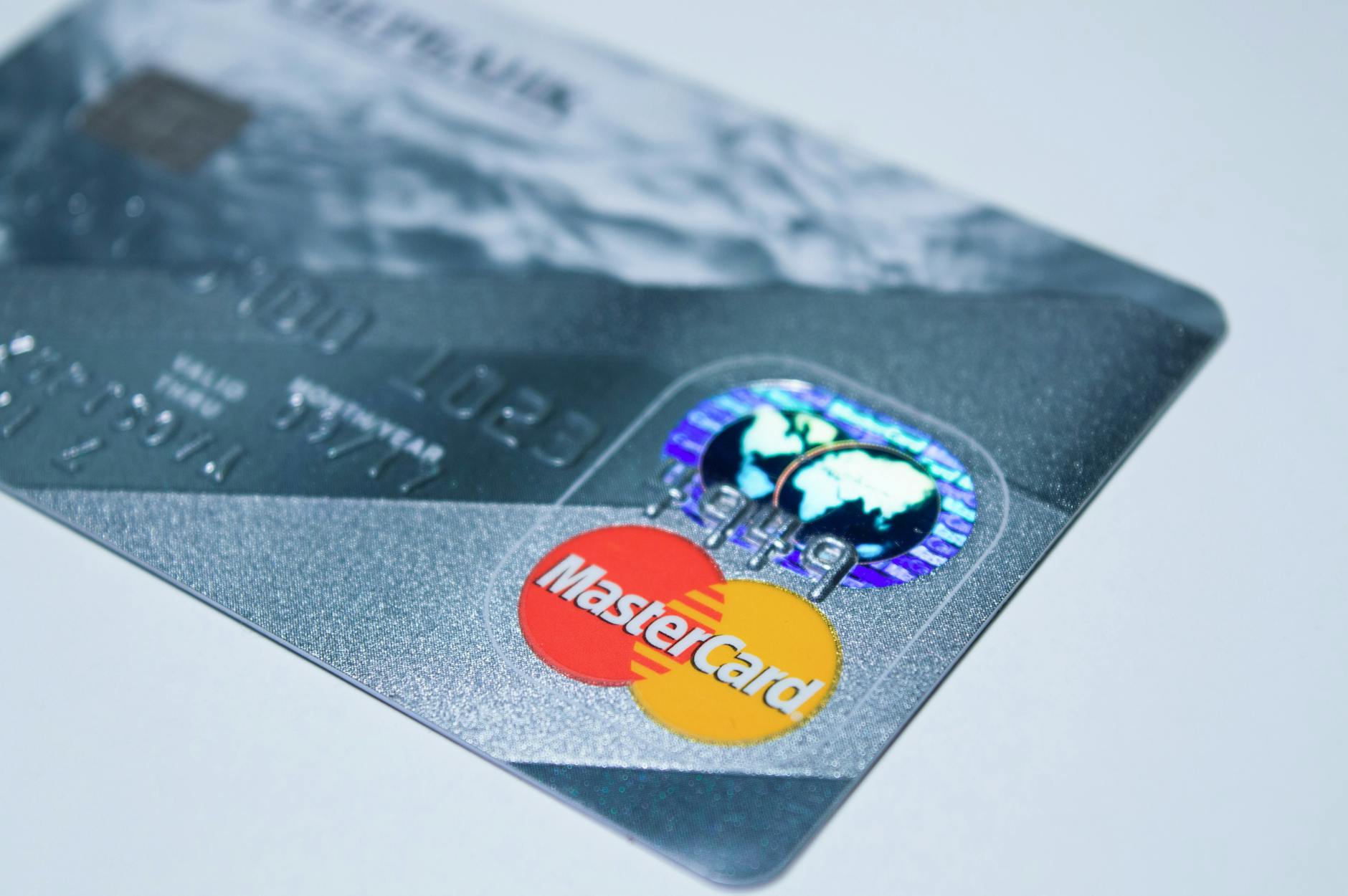President-elect Donald Trump has proposed stiff tariffs on imported goods, which could lead to higher prices and softer spending.
Have you noticed the buzz about President-elect Donald Trump’s proposed tariffs on imported goods? It’s shaking things up in consumer markets. Imagine seeing the grocery or clothing prices shoot up when you’re already keeping a tight budget. That’s the scenario many are worried about, as these tariffs could mean higher prices, leading to softer consumer spending. It affects everything from sneakers to snacks, driving concerns about inflation’s impact on everyday Americans. This is a crucial moment to consider your financial strategies, potentially even exploring how banking options could offer some savings, especially when navigating changing economic tides. For additional insights, you might explore how fluctuating currency rates are impacting transfers via FirstBank of the South. It’s a rollercoaster for retailers and consumers alike, but understanding what these shifts mean for you can make a big difference. If you want to see a deep dive into these tariffs’ implications, here’s a detailed video that breaks it down further.
Understanding Trump’s Tariff Proposal
Have you been hearing about potential tariff changes with Trump back in the presidential seat? Understanding the implications of President-elect Donald Trump’s proposed tariffs is essential for both consumers and businesses. With whispers of higher prices buzzing around, it’s crucial to grasp how these tariffs work and what they could mean for your wallet.
What are Tariffs and How Do They Work?

Tariffs are essentially a form of tax imposed on imported goods. Picture them as toll gates on international highways. Countries use tariffs to:
- Protect domestic industries by raising the cost of imported items.
- Generate revenue for the government.
- Leverage trade negotiations by affecting competitor pricing.
But here’s the kicker: these increased costs often get passed to the consumer, meaning you might find yourself paying more.
For more details on how tariffs interact with monetary policies, embark on learning about currency exchange impacts at FirstBank of the South.
Expected Rates and Goods Affected
Trump’s plan sets specific rates and aims at particular goods that could trigger a real shake-up. Here’s what to expect:
- Proposed Rates: A standard tariff of 10% to 20% might apply to a broad range of imports. However, goods from China could face tariffs as steep as 60% to 100%.
- Affected Goods: Apparel, footwear, electronics, and even furniture could become pricier. Think about your next sneaker purchase—you may feel the hit on your budget with a possible extra 20% attached to the final price tag.
Curious about a deeper dive? Check out real-world scenarios of these tariffs impacting the economy through tax analyses.
Would these tariffs mean scaling back on certain luxuries in your budget, or might they prompt interest in local alternatives? As these tariffs loom, you might need to navigate financial strategies thoughtfully, which could involve reassessing savings strategies through options like different banking services.
Impact on Consumer Prices
The ripple effect of President-elect Donald Trump’s proposed tariffs could be vast, especially for consumers grappling with everyday expenses. Imagine walking into your favorite store, and suddenly, the price tags you’ve grown accustomed to start showing numbers that make you do a double-take. This is a potential reality if the tariffs lead to increased costs on imported goods, which businesses might pass on to you, the consumer.
Analysis from Retail Experts

Industry insiders aren’t holding back on their predictions. Many experts say:
- Tariffs are essentially a tax on imported goods, and these costs will likely trickle down into retail pricing.
- Expect significant price jumps in popular goods categories, with predictions suggesting double-digit spikes.
- Retailers might struggle to absorb these costs alone—meaning you’re likely to see it reflected in store prices.
There’s a practical implication here: if businesses, particularly those reliant on imports, can’t offset these expenses in other ways, they step into a cautious dance of price adjustments and potential cutbacks. According to CNBC, the stakes are high as businesses ponder how much consumers can bear.
Specific Goods Likely to Experience Price Increases
Are you thinking about upgrading your electronics or padding your wardrobe for winter? Be prepared for some sticker shock. Key categories poised for price hikes include:
- Clothing and Footwear: With tariffs hitting apparel the hardest, this could affect everything from sneakers to suits.
- Electronics: Gadgets and devices, often produced overseas, may bear the brunt, making that next tech purchase pricier.
- Furniture and Home Goods: Import-heavy categories like home furnishings face potential cost surges.
- Everyday Items: From toys to travel luggage, you’ll likely see price tags reflecting the new tariff reality.
With these potential outcomes, it’s worth exploring what financial strategies you can adopt. For deeper insights into managing your money as these fluctuations occur, consider checking relevant resources such as How Trump’s tariffs impact everyday costs.
Ponder over how changing prices could affect your spending habits. Do you change your buying strategy or look into alternative options within the domestic market? This might even involve exploring various savings and banking strategies to preempt these impacts.
Effects on Consumer Spending Behavior
When it comes to understanding how President-elect Donald Trump’s proposed stiff tariffs on imported goods could crimp spending, history teaches us valuable lessons. By looking at past tariff implementations, one can discern significant truths about their extensive impact. Here’s what you need to know to be financially savvy in a period of economic shifts.
Historical Context: Tariffs and Spending

Historically, tariffs have always played a critical role in shaping consumer spending patterns. Take the Tariff of 1930, also known as the Smoot-Hawley Tariff. Soaring import taxes then led to retaliatory tariffs from other nations, shrinking trade and consumer choices significantly. Prices shot up on many basic goods, compelling consumers to put off non-essential purchases and shrink their household budgets.
Let’s zoom forward to more recent years. Early in Trump’s first presidential term, imposed tariffs primarily on steel and aluminum also pinched consumer spending. Industries relying heavily on imported raw materials faced increased production costs, and that uptick naturally trickled down as higher prices on store shelves.
Concurrently, tariffs can channel domestic loyalty into paths less traveled by savvy consumers—prompting them to explore local options. Why shrug off imported gadgetry when perhaps it’s time to appreciate home-produced craftsmanship? Maybe these tariffs nudge you into embracing new purchasing terrains. Think about it: each price hike sparks a consumer re-evaluation, a consideration of change both in roots and routes.
Economic Factors That May Exacerbate the Situation
Fast forward to the current economic climate, and several interconnected pressures could magnify the effect of proposed tariffs:
- Inflation is gradually easing from its pandemic highs, but tariffs could reignite the embers, roasting household savings.
- Labor costs have also been on the uptick. As wages rise to meet inflationary demands, some speculate that the price hikes on imports may cascade into home-grown goods as well.
- The global supply chain remains fragile post-COVID-19, already marred by rising logistical hurdles. Tariff-induced supply chain shocks could further throttle throughput, inflating costs and shrinking availability.
As consumers, the confluence of tariffs and these economic forces might prompt a sewing of the pocket, as every cent earned becomes a cent-minded. How might your grocery list shrink or shift in light of these overlapping trends? Awareness isn’t just power here; it’s the cornerstone of conditional purchase!
But here’s the silver lining: every fiscal snowfall invariably melts into streams of creativity and adaptation. Sure, vendors might change strategies or source materials locally, but you, too, might cash in on such sweeping shifts by exploring personalized financial maneuvers.
For a more in-depth exploration, you can check these resources: Tariffs have costly consequences for consumers and How Will the Trump Tariffs Impact the US Economy?. They offer comprehensive insights that can grant you a deeper understanding of the broader financial implications of these potential tariffs.
Let these historical nuances and economic forces stew in your mind, urging you to sew your financial strategies creatively.
Retail and Business Responses to Tariffs

As President-elect Donald Trump’s stiff tariffs on imported goods loom on the horizon, businesses face pivotal choices. Do they absorb the new expenses, risking their narrow profit margins, or will these costs slip down to you, affecting what emerges on your final bill? Retailers and businesses are at a crossroads, determining how best to weather the tariff storm without aliens affecting their consumer bases. Here’s how they’re responding.
Adjusting Pricing Strategies
Tariffs as high as 60% on Chinese-made goods would tempt any business to pass expenses onto customers. But wait, there’s more to this story. Companies wrestle with two primary options:
- Absorbing Costs: By taking the cost hit, businesses might maintain customer loyalty, but it’s risky. Retailers fear eroding profit margins in a market that’s already cutthroat.
- Passing Costs That Trickles Down: Some industry experts suggest leaning towards passing costs inevitably to consumers. This path likely yields higher prices across retail—a decision driven often by necessity when margins are tight (Check out the analysis on potential pricing strategies in What Will Trump’s Tariffs Mean For Businesses?).
Given these complex variables, many are steering through the fiscal storm with a nimbleness that betrays years of learned experience.
Supply Chain Adaptations
Rising tariffs don’t just mean expenses—businesses are strategically re-mapping supply chains. Imagine it as rerouting a sailing fleet when rough seas disrupt navigable paths. Companies are looking to minimize Chinese dependency by sourcing from other parts of the globe, de-risking at least part of their supply chains.
- Domestic production is increasingly appealing as firms scout local manufacturers for similar goods. Yet, shifting takes time and resources—it is not an overnight transformation.
- Some multinationals are rerouting production lines across other continents, exploring budget-friendlier manufacturing hubs like Southeast Asia or even parts of Latin America.
Amid all this, many businesses double down on lobbying efforts, pressing governmental allies for exemptions that keep costs manageable (explore recent developments).
So, as you make purchasing decisions in the weeks to come, remember that the intricacies of tariffs unfurl broader than mere percentages and cents. Retailers weave strategies intricate enough to carry them through such economic squalls, with the hope that steadfast consumer relationships will be there on the trade winds guiding them forward.
Long-Term Outlook on Tariffs and Economy
Navigating the murky waters of tariffs and economic predictions can feel like steering a ship through a storm. With new tariff proposals on the horizon, many are wondering how these might ripple through economic currents over time. This section will delve into what experts foresee about the trajectory of the economy under a future strained by tariffs.
Predictions from Economic Analysts

As you’ve likely heard, economists are painting mixed forecasts on the long-term implications of Trump’s proposed tariffs. The key question is whether they would buoy domestic industries or sink spending.
Economic analysts predict several possible outcomes:
- Increased Production Costs: With tariffs potentially driving up the cost of imported materials, companies might have no choice but to increase their product prices. This chain reaction can make the cost of living more expensive for you, the consumer.
- Restructured Trading Networks: Anticipate a shake-up in international trade alliances. Countries subject to tariffs might seek new partners, reshuffling global trade networks and possibly leading to political frictions. According to a detailed examination by the Tax Foundation, changes in trade policies could lead to profound shifts in market dynamics.
- Domestic Industry Growth: Some U.S. sectors could see a boon, prompting increases in local production and job creation. However, these gains hinge on businesses swiftly adapting to changes in import costs and supply chains without faltering.
- Consumer Spending Impact: As tariffs reshape prices, your spending habits might need a makeover. With everyday goods possibly registering new highs, non-essential purchases could drop, reshaping shopping trends significantly.
Experts opine that tariffs will not act in isolation. In fact, they might intertwine with existing forces like monetary policy shifts, currency fluctuations, and macroeconomic trends to deliver unexpected economic surprises. Would you find yourself adapting to new realities of spending in a world where Impulse buys take a back seat to thoughtful economic planning?
To explore more about the broader implications, consider reading How Will the Trump Tariffs Impact the US Economy?, which offers a comprehensive examination of possible scenarios.
Looking at the Bigger Picture: Trump’s Tariff Impact
As President-elect Donald Trump proposes tariffs on imported goods, it’s essential to grasp the overarching consequences for both domestic markets and consumer spending. The implications extend beyond immediate price increases and delve into broader economic dynamics. Here, we break down how these tariffs fit into the economic puzzle and what you must consider.
Economic Ripple Effects

The proposed tariffs will likely unleash a series of chain reactions—think of a stone hitting the water and sending ripples far and wide. Here’s how:
- Consumer Price Pressure: Expect a universal tightening of budgets as imported goods become more expensive. Prices on daily essentials and luxury items may spike, pushing families to rethink their spending strategies. For further insights, the Tax Foundation offers an analysis of how these policies could play out economically.
- Inflation Risks: Tariffs can exacerbate inflation. Even as global pressures ease, new import taxes can act as hard brakes, restraining economic ease and wiping away savings.
- Domestic Manufacturing Surge: If imports become less attractive or feasible, local industries could gain footing, potentially bolstering job markets and production at home.
- Shifts in Trade Partnerships: These tariffs could alter trade talks and partnerships globally, reshaping how countries interact economically. Explore what this means for consumer prices at BBC News.
Strategic Consumer Focus
In the face of rising costs and economic shifts, what steps can you take to stay agile and savvy? It’s all about smart, forward-thinking decisions:
- Reevaluate Buying Habits: Maybe that imported tech gadget isn’t necessary, or that shopping spree could be postponed. Consider alternatives closer to home.
- Explore Local Products: Encouraging domestic business keeps work local and potentially lowers costs in the long run. Tap into local crafts and goods instead of defaulting to imports.
- Vigilant Financial Management: Keep your budget tight and adaptable. Refining financial strategies, like re-examining banking options, could ease transitions in economic settings.
Predictions indicate these tariffs’ effects stretch far beyond stores, touching multiple facets of your daily finances and requiring careful planning. For an extended view on how experts are parsing these potential changes, consider diving into NPR’s analysis.
These facets only underscore the necessity to stay informed, agile, and proactive as the contours of these tariffs sharpen into economic reality. With thoughtful responses and smart choices, you’re more than equipped to ride these energetic shifts while maintaining financial discipline and innovation.
Conclusion
Navigating the economic landscape amid President-elect Donald Trump’s proposed tariffs requires preparation and adaptability. With the potential for consumer prices to rise, aligning your financial strategy with current economic conditions becomes essential. Whether it’s reevaluating buying habits or exploring more resilient savings plans, being proactive today can safeguard your budget against tomorrow’s changes.
Take a closer look at multiple banking options to ensure your finances are on track to withstand any market shifts. This could be a crucial step in fostering greater financial stability during times of uncertainty. Essentially, adapting now provides the flexibility needed to manage the unforeseen. Keep the insights flowing, and stay ahead of the curve as these economic trends unfold.
Ultimately, understanding the ripple effects of these tariffs can engage you more actively in your financial journey, promoting calm in the face of change. Let’s interact, keeping informed about how these national decisions affect your wallet and lifestyle, ensuring you’re prepared for whatever the market delivers next. Read more!

